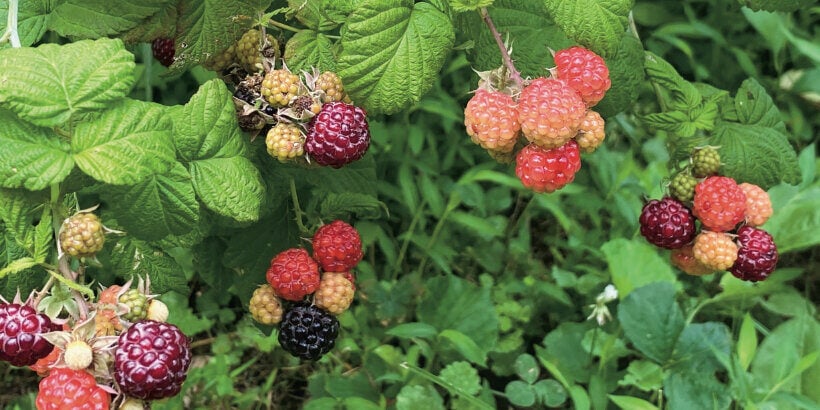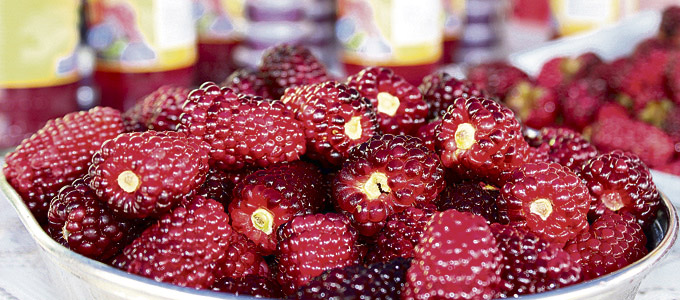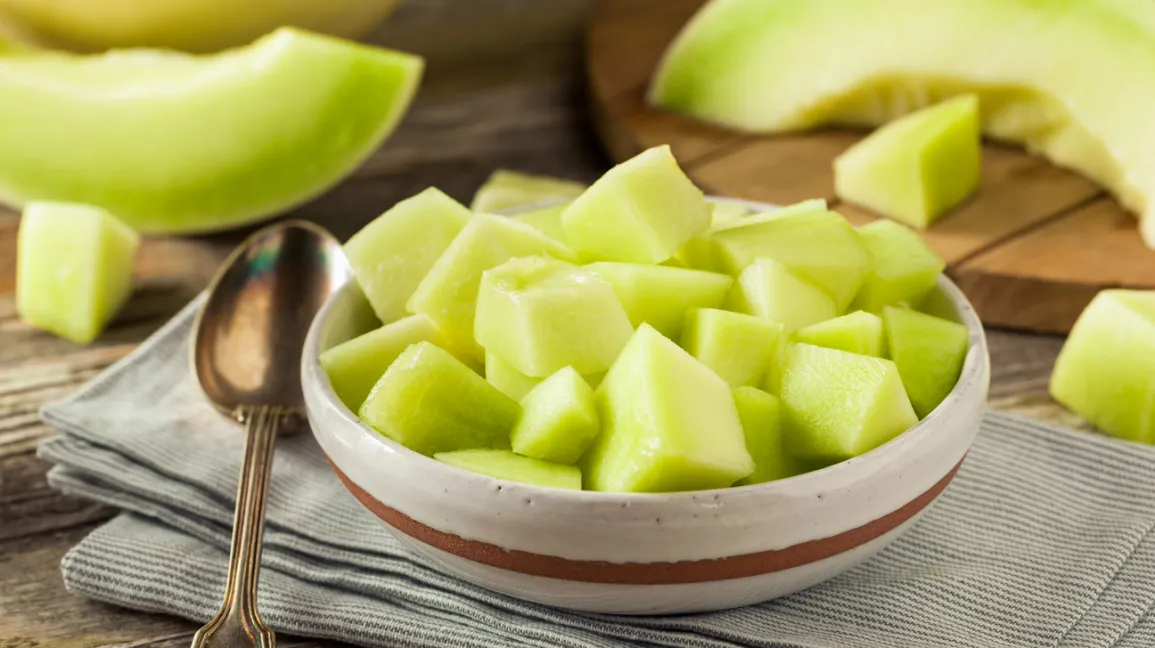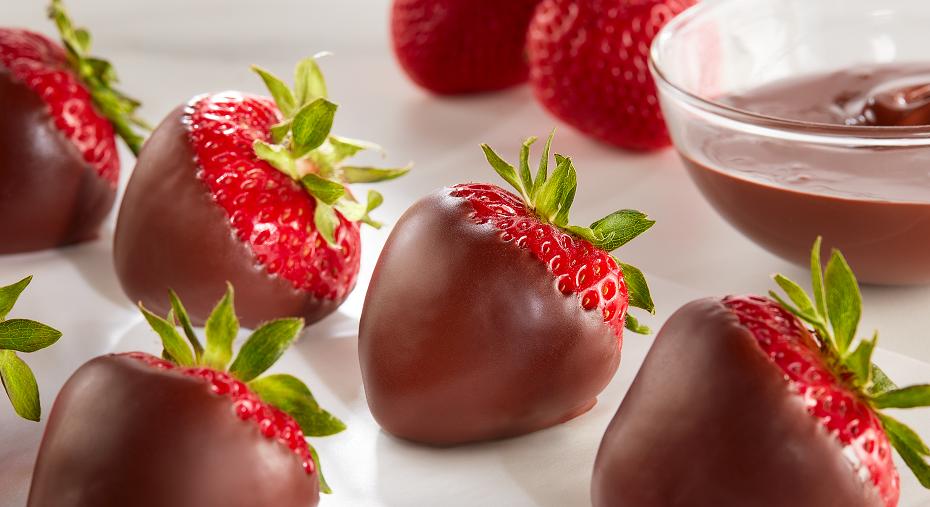Fruits are good for health and essential for healthy eating. But some people are interested in knowing those who contribute less carbohydrates, to measure the amount of this nutrient in the food.
If you are curious, want to diet keto, or need to reduce carbohydrate intake, you will be interested to know this list in more detail.
Fruits That Provide Less Carbohydrates
Carbohydrates are found in varying quantities in the different fruits. Below we know the 11 that contribute less per 100 grams of product and how many hydrates contain a standard ration.
1. Watermelon

4.5 grams of carbohydrates per 100 grams.
6.75 grams for a cup (about 150 grams of chopped watermelon).
One of the lightest fruits is ideal to consume in summer: this is its best season and, in addition, it helps us to refresh us. You can eat as you are in dessert or as I snack.
2. Raspberry

4.6 grams of carbohydrates per 100 grams.
5.52 grams for a cup (about 120 grams of raspberries).
Almost all the fruits in the forest have a low amount of hydrates in their composition and the raspberry is the one with smaller values. On the other hand, it gives us a good dose of vitamin C and folates.
Much less known than strawberries and blueberries, it’s a very juicy specimen with a delicious sweetness. We can use it to make ice cream (with Greek yogurt or coconut milk), smoothies, and salads. For moderate diets in carbohydrates, they look great with oat garage.
3. Mora

5.1 grams of carbohydrates per 100 grams.
7.1 grams a cup (140 grams of blackberries).
The blackberries have gradually gained a prominent place in the markets, along with the blueberries and raspberries. And it’s no wonder that every day they have more consumers since it’s a fruit with a good amount of fiber, vitamin C, and valuable antioxidants. Not forgetting that it is light and very tasty.
Combined with cheese and nuts, they are an ideal option to make a small snack or healthy incoming. In addition, we can use them to cook sauces and seasonings with which to accompany the meat (in this case without adding siropes or juices).
4. Cool.
5.8 grams of carbohydrates per 100 grams.
3,50-4 grams per unit (between 60 and 70 grams).
Cool is a tropical fruit with an outstanding nutritional profile. It provides fiber, folate, vitamins A and C, potassium, copper, and manganese. The best way to take advantage of all these nutrients is to eat fresh fruit.
To do this, it can be consumed just like an apple or a pear. The skin and seeds are edible and can be eaten as much as you can bite and cut it into slices.
5. Avocado

5.9 grams of carbohydrates per 100 grams.
8 grams for a medium unit (of 135 grams, no skin or bone).
Of all the fruits low in hydrates, avocado is a unique specimen. The most remarkable is the high percentage of fats in its composition, highlighted by having a very healthy profile.
To enjoy it, we can use it to make salads and milkshakes. It is also perfect for anointed keto bread toast made with coconut flour.
6. Melon

6 grams of carbohydrates per 100 grams.
9.6 grams for a cup (160 grams of melon).
Next to the watermelon, the melon is the king of fruit in summer and is also one of those with the least carbohydrates. Lightweight, refreshing, and satiating; it is affordable and very easy to transport and eat outside the home.
Beaten with cucumber, yogurt, and some mint leaves, we have a healthy incoming that prepares in the blink of an eye.
7. Blueberries

6.1 grams of carbohydrates per 100 grams.
9 grams for a cup (150 grams of blueberries).
Cranberries are a very positive option for the body and have a remarkable flavor, between fresh and acid.
Combine well with all kinds of dairy: smoothed cheeses, fresh cheese, camembert, stilton, and protein yogurts (like skyr)
8. Strawberry

7 grams of carbohydrates per 100 grams.
8.4 grams per 10 medium units (120 grams).
One of the fruits that most adepts have and that can be inserted quietly into a low-carb diet. In addition, one fact that sometimes goes unnoticed is that they are a great source of vitamin C.
They are so tasty that you don’t need to add them to enjoy them. But if we want something more greedy, we can bathe them or fill them with chocolate ganache. To do this, we will use a variety of more than 80% cocoa and no added sugar (if possible).
9. Pomegranate

7.5 grams of carbohydrates per 100 grams.
6.75 grams per half a cup (90 grams of pomegranate arils, which is a small edible grain).
Very rich in antioxidants, fiber, folates, and vitamin K. The pomegranate is an underused fruit, perhaps because of the difficulty of peeling and unraveling it. But it’s worth the effort and taking advantage of the fall to consume it. Combine well with other foods such as cheese, yogurt, lettuce, pumpkin, or nuts.
10. Orange

8.6 grams of carbohydrates per 100 grams.
12.9 per medium unit (150 grams).
In winter the variety of fruits available on the market is somewhat reduced. But you can always resort to orange which also contains a moderate amount of hydrates.
Fresh fruit, sliced or sliced, is delicious. We can accompany it with cinnamon, black chocolate, or dried fruit cream anointed on top.
11. Papaya

8.8 grams of carbohydrates per 100 grams.
13.2 grams for a cup (150 grams of papaya cut into dice).
This fruit of tropical origin is appreciated for the nutrients it provides. Among them, we highlight vitamins C, and A, potassium, and a good percentage of fiber. Also, thanks to the presence of enzymes, it is very digestive.
To consume it we’re going to remove the skin and seeds. Once ready, we can eat it as much or use it in salads, vegetable dishes, and smoothies. A delicious idea for breakfast with papaya is to make a chia pudding (with almond drinks and no sweeteners).
What Foods Don’t Have Carbs?
Some foods do not contain hydrates in their composition. In general, these are products in which fats and/or proteins predominate:
- egg
- butter and ghee
- fresh meat (unprocessed): chicken, rabbit, veal or pork
- vegetable oils such as olive, sunflower, sesame, coconut, among others
- fresh fish: cod, salmon, sole, hake, tuna, etc.
- mollusks and crustaceans: mussels, prawns, squid, clams, or lobsters
Some cheeses have a very low amount of carbohydrates (lactose present in cow’s milk). Many are around 1-2 grams per 100 grams of product, while natural yogurt and milk contain between 4 and 5 per 100 grams.
Are there fruits that don’t have carbs?
As we’ve seen, all fruits have a small amount. Although it should be remembered that hydrates are not bad in themselves, as long as they do not come from processed or added sugars. Only the ratio should be monitored in certain diets or for specific health conditions.
What are the vegetables that contain less carbohydrates?
Vegetables are foods that stand out for providing fiber, minerals, and vitamins. On the other hand, macronutrients (protein, hydrates, and fats) are rather scarce. The only exception is made up of the roots and tubers, which contain starch and therefore provide more hydrates than the rest. In a standard diet, potatoes and monies may be included as sources of healthy carbs.
In summary, we offer a list of vegetables that have a lower amount of glues. These are, therefore, those to be given priority in a ketogenic diet or on a low-carb menu:
- Canons: 0.7 grams
- celery: 1.3 grams
- brécol: 1.8 grams
- cucumber: 1.9 grams
- Pumpkin and zucchini: 2.2 grams
- cabbage: 3.4 grams
- tomato: 3.5 grams
- Green pepper: 3.7 grams
- mushrooms: 4 grams
- eggplant: 4.4 grams
- ace: 4.5 grams
Some fruits have less carbohydrates than others, but they’re all healthy
Fruits are a group of foods with similar characteristics. In general, this is a nutritious and very positive option for health. This is why it is advisable to ingest them regularly and in the most varied way possible.
However, some types of diets limit the amount of hydration that can be consumed throughout the day. In these cases, it is appropriate to choose fruits with a low content, to take advantage of its benefits without exceeding this limit.
In any case, it is important to give priority to fresh or frozen, which do not contain added sugar or sweeteners. These can be eaten alone or in all kinds of sweet and salty recipes.

